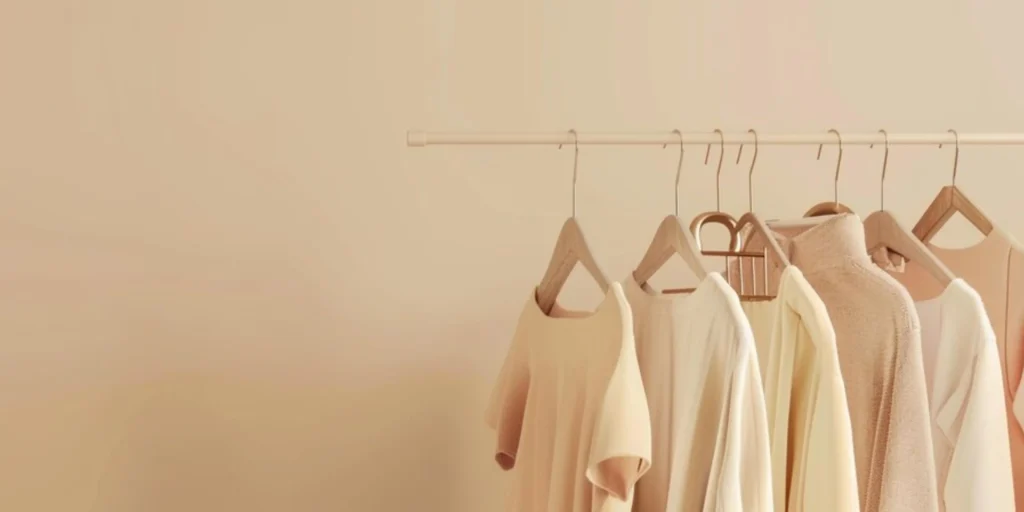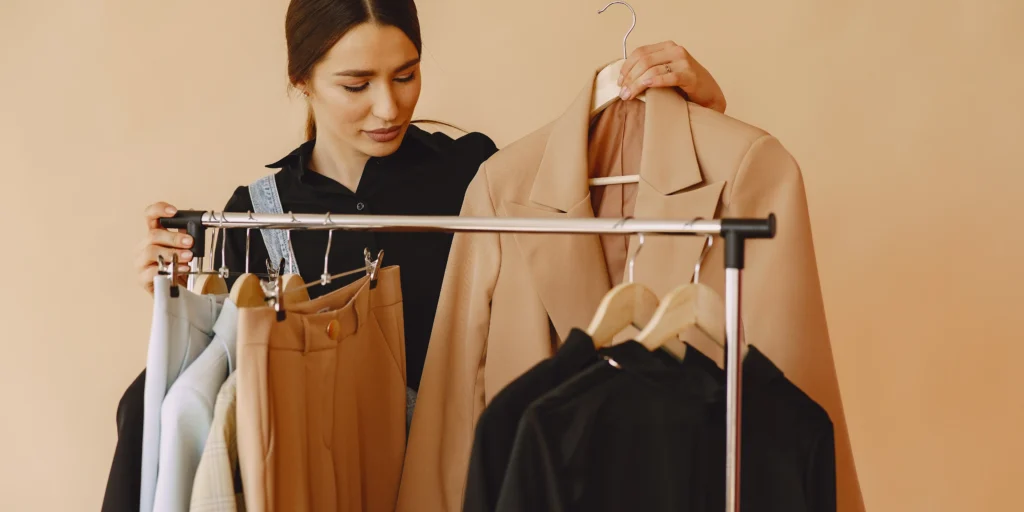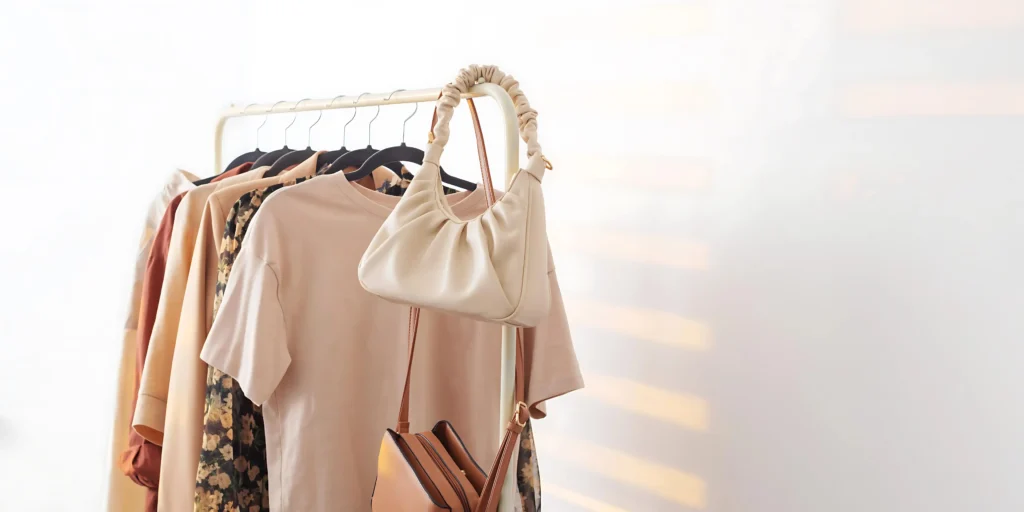Clothing brand owners often face a common challenge: What’s more, how does one further bring it to the market with versatility and appeal to the desired audience? If you are inclined to position yourself, have you explored the possibility of the capsule collection? This answer is gaining traction, especially among eco-friendly and timeless fashion advocates. But how do you actually create one?
Developing a capsule collection for your clothing brand is not just a passing trend, it is an efficient approach that makes it easy for customers to be presented with a few key pieces that can appropriately work together. Consider a situation where a client is provided with a collection of 10 to 20 items, consisting of classic jeans, neutral blazers, and crisp white shirts. With these few essentials, your customers can create numerous looks, such that fast fashion purchases become less necessary.
In the modern world of fashion, with the importance of sustainability values embedded into the core mission of fashion initiatives, having this capsule wardrobe collection for 2024 could provide new directions for brand growth and development.
Lets dive into this blog, to learn about the process of developing capsule collection design for your clothing brand, expanding tips on how to build a less is more range but packs a punch in the brand’s messages, and offer advice to enhance your clothing brand USA more competitive. Read on to find out the necessary steps to take in order to roll out a successful capsule collection for your clothing brand.
 What is a Capsule Collection?
What is a Capsule Collection?
A capsule collection is a small, curated selection of clothing pieces intended to provide maximum versatility. The idea of a capsule collection is gradually becoming popular and developing attributes. Capsule collections are considered to promote the less is more approachable, due to the focused approach of a few items that help in creating numerous combinations. The most distinguishing factor that sets capsule collections apart from the normal collections available in stores is the number of pieces or items.
The idea behind a capsule collection is to simplify the decision-making process for customers. Most capsule collections aim at revolutionizing the buying behaviors of consumers. Aiming to provide pieces that do a bit more than wear than focus on overwhelming amounts of choices and obscuring choices. This helps clients adjust their wardrobe in such a way that it is useful but still minimal, hence conserving time, energy, and finances. Regarding brands, aside from encouraging repeat sales, this method also supports the idea of a new mode of consumption offering fewer pieces but of better quality that lasts for longer periods.
 The history of capsule collections dates back to when fashion designer Susie Faux invented one of such in the 1970s. She believed it was logically sound to create a simplifiedcollection of classic pieces that would always be in fashion, leaving women with appropriate outfits to wear all the time without having to force unnecessary contents in their closets. The concept later became ‘popularized’ in the late 1980s when Donna Karan debuted a collection titled the classic ‘Seven Easy Pieces’ and introduced the concept of a ‘mini’ wardrobe even more.
The history of capsule collections dates back to when fashion designer Susie Faux invented one of such in the 1970s. She believed it was logically sound to create a simplifiedcollection of classic pieces that would always be in fashion, leaving women with appropriate outfits to wear all the time without having to force unnecessary contents in their closets. The concept later became ‘popularized’ in the late 1980s when Donna Karan debuted a collection titled the classic ‘Seven Easy Pieces’ and introduced the concept of a ‘mini’ wardrobe even more.
More recently, capsule collections have become more popular as many customers turn to minimalist and sustainable fashion. In contrast to adhering to succumbing to the cycles of fast fashion, capsule collections practice slow fashion in that at every individual travel, wear focuses on the cut and the value of the piece. For many eco-friendly consumers, this is especially attractive as they do not have to buy many items and still own fewer quality but multi-functional pieces.
As an illustration, a typical conservative wardrobe collection for the year 2024 will embody items like a chic fitted coat, a classic white blouse, denim pants cut to perfection, and a beige coat, among other items. These few pieces can create dressed up or dressed down looks based on the event; however, once again, this calls for a mix and match strategy. Every item within a capsule collection is intentionally created so that each item enhances the other items in the collection, allowing the wearer to create multiple outfits out of minimal clothing.

In addition, there is a time and place for particular capsule collection. For example, a capsule collection for spring may pay attention to sweet colors and light weight cotton like fabrics, while a autumn collection may bring out the warm shades and heavier materials such as wool or leather. By adjusting the theme, brands can keep their capsule collections fresh and aligned with current trends while still adhering to the core philosophy of simplicity and versatility.
Key Benefits of Capsule Collection:
- Versatility: Each piece in a capsule collection is designed to be worn with other items, allowing for a wide range of outfit combinations.
- Timelessness: Unlike fast fashion, capsule collections prioritize timeless designs that won’t go out of style, offering longevity to consumers.
- Sustainability: Capsule collections align with the sustainability movement, encouraging consumers to buy fewer, higher-quality items that last longer.
- Simplified Shopping Experience: By limiting choices, capsule collections make it easier for customers to find what they need, reducing decision fatigue.
For fashion brands, launching a capsule collection is an opportunity to showcase a well-defined aesthetic. It allows them to communicate a clear message through a limited number of items that represent their vision and values. A capsule collection can also be a great way for a brand to experiment with a new theme or market segment without overcommitting resources to a larger collection.
What is the Difference Between a Capsule Collection and a Capsule Wardrobe?
Both these terms—capsule collection and capsule wardrobe – are related in a way to the concept of minimalism in fashion but they indicate different ideas. A capsule collection is a set of clothing pieces created and marketed by a fashion brand within a limited time frame. This type of product line is typically versatile, cohesive, and sometimes eco-friendly. The aim is to create a few effective, timeless designs that can be pattern and color coordinated with other garments easily.
In contrast, a capsule wardrobe is the individual’s own set of key pieces that can be worn with many other pieces. It contains items that have been selected in a way to the end that you can wear several different looks with relatively few clothing items. A capsule wardrobe is something that the consumer creates in contrast to a capsule collection that is typically made and marketed by a company.
The ultimate purpose of a capsule wardrobe is to help organize the clothing items in as few a number as possible so as to lessen the amount of choice paralysis experienced by the individual and promote a more ethical view of capitalism of clothing that is healthy—buy less but of better quality. It usually contains a few core pieces—plain or colored shirts and pants, a jacket, and a pair of shoes for many purposes.

To summarize, capsule collection is made and presented by a fashion designer’s house, whereas a capsule wardrobe is a selection of clothing made by a person to be worn on a daily basis. The former and the latter underlie the principles of minimalism, practicality, and durability; however, they have different functions in the fashion world.
Why Create a Capsule Collection for Your Clothing Brand?
A capsule collection is an effective way to grab your customers’ attention while maintaining your clothing brand’s identity. It also helps:
- Increase brand loyalty: Offering customers a versatile and curated wardrobe can make your clothing brand USA stand out.
- Cost-effective production: A smaller, curated collection is easier to manage, which means lower production costs and less wastage.
- Sustainability: Focusing on fewer, high-quality pieces aligns well with growing consumer demand for sustainable fashion.
8 Key Steps in Creating a Capsule Collection
1. Research Your Market
Understanding your target audience is key. Analyze trends and consumer behavior to define the direction of your capsule collection. Look into what your competitors are doing and explore opportunities in the capsule wardrobe collection 2024 trend.
2. Decide on the Theme or Concept
Your capsule collection should have a central theme that ties all pieces together. For instance, a minimalist fashion capsule collection can focus on neutral colors and simple, functional designs. Meanwhile, a sustainable capsule collection may emphasize eco-friendly fabrics and production methods.

3. Select Core Pieces
Limit the number of items to a manageable amount, typically between 10 and 50 pieces. Ensure that each piece complements the others in style, color, and form. For example, a classic trench coat, versatile trousers, and a quality t-shirt can serve as the backbone of a capsule collection for a clothing brand.
4. Use High-Quality Fabrics
Investing in good-quality fabrics is essential to ensure that your capsule collection items are durable. Consider sustainable options like organic cotton or recycled polyester to appeal to eco-conscious consumers.

5. Create Prototypes and Test
Before launching, create prototypes of each item in your capsule collection. Get feedback from focus groups, industry experts, or even early-access customers. Testing the fit and durability will help you refine the pieces.
6. Set a Pricing Strategy
The limited nature of a capsule collection often allows for a higher price point. Focus on the quality and uniqueness of the pieces to justify the price. Keep in mind the cost of production, including fabric, labor, and marketing, when deciding on prices.
7. Marketing and Launch
A strong marketing campaign is crucial for a successful launch. Create a buzz on social media by sharing behind-the-scenes looks into your design process. Highlight the theme, sustainability, and versatility of the pieces. Your goal should be to emphasize how your clothing brand USA stands out from competitors.
Example of a Capsule Collection Design Process
| Step | Action | Key Focus |
| Market Research | Analyze customer behavior and industry trends | Identify gaps and opportunities |
| Theme Development | Choose a concept (e.g., minimalist or seasonal) | Ensure cohesion across the collection |
| Piece Selection | Pick 10-50 core, versatile items | Mix and match versatility |
| Prototyping | Create and test prototypes with focus groups | Refine fit and material quality |
| Marketing | Promote via social media and email campaigns | Drive customer interest and anticipation |
8. Monitor Performance
Track the success of your capsule collection by monitoring sales, customer feedback, and social media engagement.
Capsule Collection Design Tips
Here are some practical fashion capsule collection tips to help your collection succeed:
- Stick to a color palette: A consistent color palette makes it easier for customers to mix and match pieces.
- Embrace timeless designs: While trends can help your collection stand out, consider including timeless pieces that will not go out of style.
- Use eco-friendly fabrics: Sustainability is more important than ever. Consider using organic or recycled materials to attract eco-conscious customers.
- Plan for versatility: Every piece should serve multiple functions, like a jacket that works for both casual and formal settings.

Capsule Collection vs. Full Collection
| Feature | Capsule Collection | Full Collection |
| Number of Pieces | 10-50 | 100-200 |
| Focus | Versatility, theme-driven | Seasonal trends, variety |
| Production Cost | Lower due to limited items | Higher due to larger range of products |
| Sustainability | Easier to implement sustainable practices | More challenging due to scale |
| Appeal | Niche, curated experience | Wide variety, mass appeal |
Maker’s Row: Your Partner in Building a Capsule Collection
Capsule collections or limited edition range of clothes can be very difficult to develop especially for new labels or brands. Luckily, there is Maker’s Row. Be it factory, pattern makers or fabric suppliers, we bring your clothing brand USA to the right partners found at Maker’s Row. From design to last stage of production, we make it easier for you to execute your capsule collection.
Visit Maker’s Row now to see how we can help you with the design stage of your capsule collection.
Conclusion
launching a capsule collection for your clothing brand can be a major turning point. By concentrating on a collection of high-quality and practical pieces, you present your customers a complete and forever wearable wardrobe. Whether you are designing a capsule wardrobe for your brand or looking at sustainable capsule collection concepts, this strategy can significantly differentiate you in the competitive fashion terrain.
